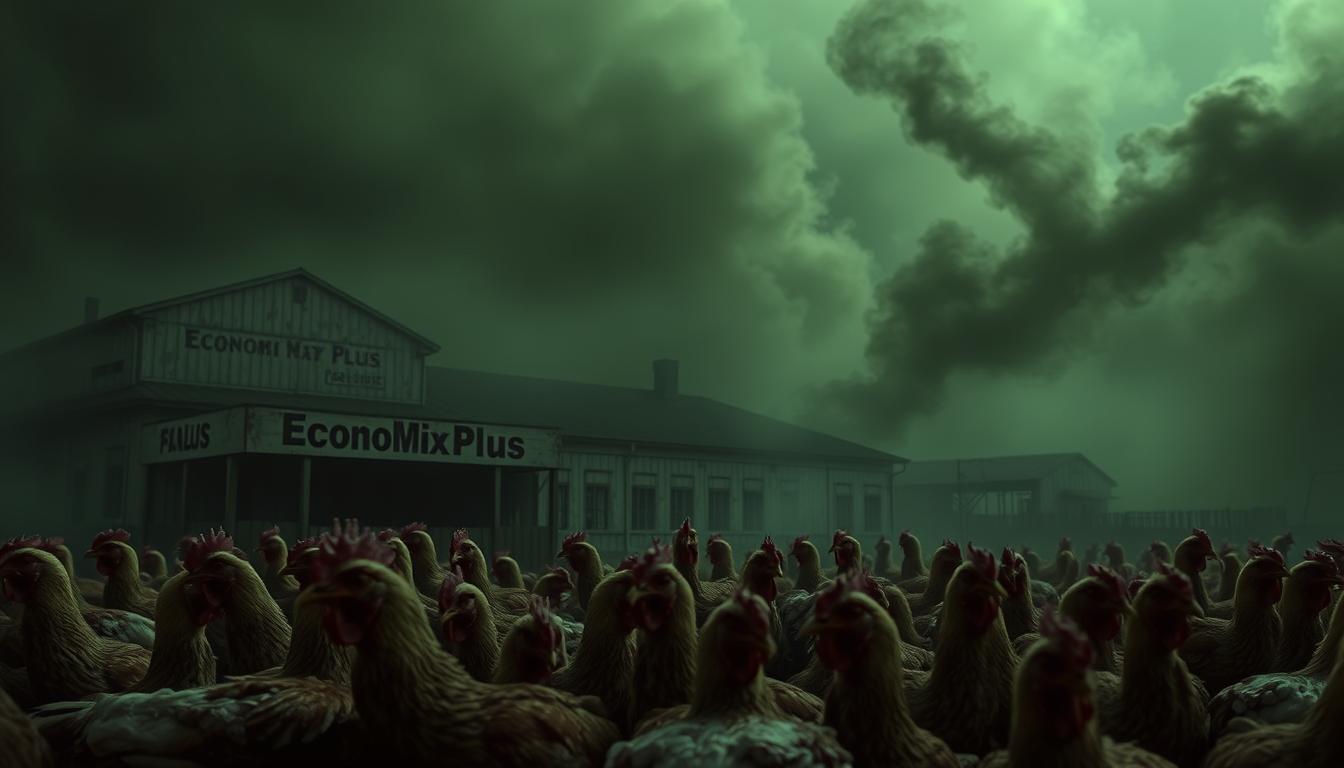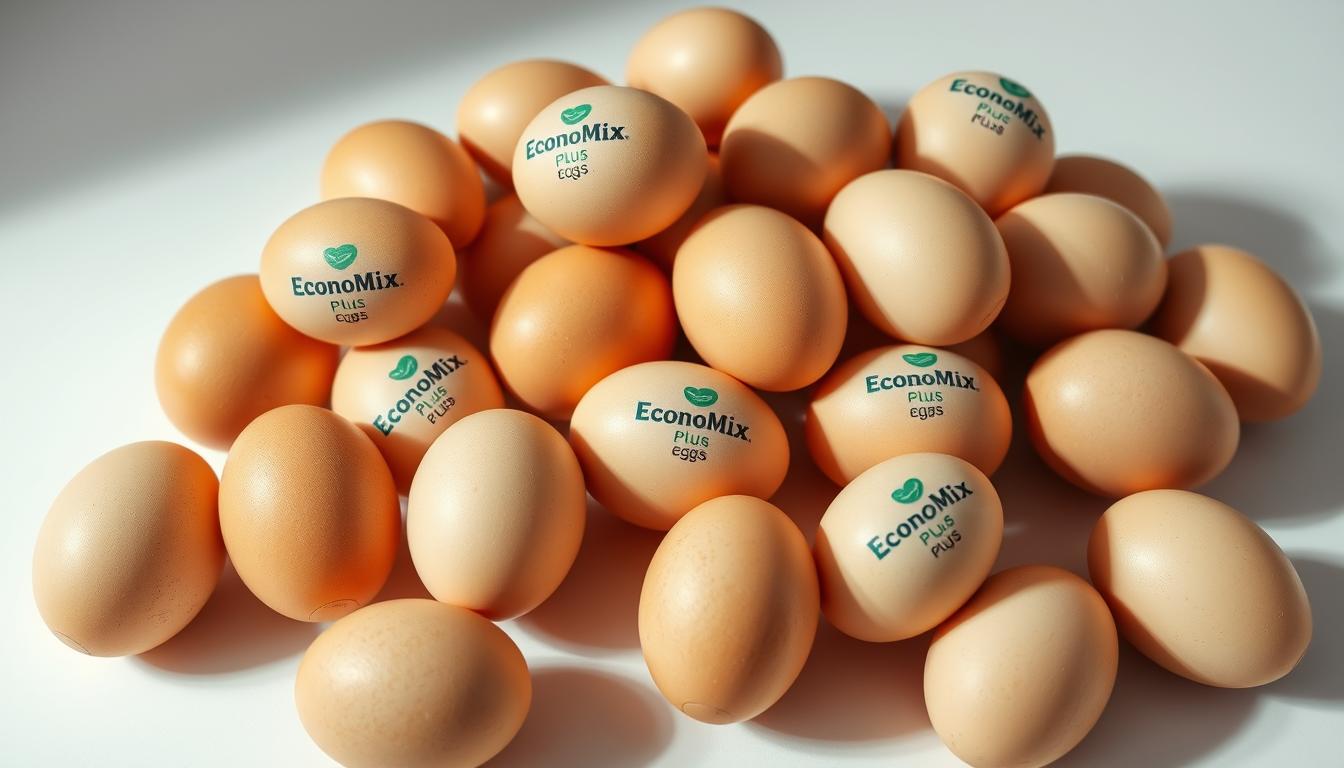The recent salmonella outbreak has raised concerns about the future of egg prices. The egg industry is already reeling from the impact of bird flu outbreaks among egg-laying chickens, leading to a significant increase in egg prices.
According to the Bureau of Labor Statistics, prices have risen 28.1% in the past year, with the average price for a dozen large, grade A eggs being $3.20 in August. As the industry struggles to recover from previous supply chain disruptions, this new outbreak threatens to drive prices even higher.
Key Takeaways
- The egg industry faces a potential crisis due to the recent salmonella scandal.
- Egg price volatility has been a significant issue for American consumers in recent years.
- The industry is still recovering from previous supply chain disruptions.
- Market trends, expert opinions, and historical patterns will be analyzed to determine the impact on egg prices.
- Compounding factors such as bird flu outbreaks and changing consumer behaviors will be explored.
The Current Egg Price Crisis
The US is experiencing an egg price crisis, with prices escalating rapidly. This surge is attributed to a combination of factors, including the bird flu outbreak, the coronavirus pandemic, and international conflicts, which have cumulatively driven up food prices over the last few years.
Recent Price Trends in the US Market
Egg prices have seen an unprecedented rise, with retail demand increasing for 18 consecutive four-week periods, even during the summer when consumption typically decreases. This consistent demand has strained supply, keeping prices elevated.
Statistical Overview of Egg Cost Increases
Statistical data indicates that egg prices have outpaced inflation in many other food categories. Key statistics include:
- Egg costs are approximately 40-50% higher than pre-pandemic levels.
- The number of households reporting that egg prices have affected their grocery shopping decisions has doubled in the past year.
| Category | Pre-Pandemic Price | Current Price | Percentage Increase |
|---|---|---|---|
| Eggs | $1.50/dozen | $2.10/dozen | 40% |
| Grocery Basket | $100 | $120 | 20% |
As shown in the table, egg prices have increased significantly more than the overall grocery basket, highlighting their volatility.
Understanding the Salmonella Scandal
The recent salmonella outbreak has sent shockwaves through the egg production industry. This outbreak has primarily affected large-scale commercial egg farms, leading to significant financial pressures on farmers and a potential surge in egg prices.
Timeline of the Recent Outbreak
The salmonella outbreak was first detected in early fall, with several major egg producers reporting contaminated farms. Since then, the situation has escalated, with more farms being affected across multiple states. The timeline of the outbreak is crucial in understanding its spread and impact.
- Initial detection: Early fall
- First reports: Major egg producers
- Escalation: Multiple states affected
Affected Farms and Regions
The outbreak has mainly impacted large-scale commercial egg farms in the Midwest and Southern states, regions that account for over 40% of US egg production. Farmers in these regions are facing significant challenges as they implement enhanced testing protocols and facility sanitization measures. The affected farm operations have had to temporarily halt production, removing millions of eggs from the supply chain.
| Region | Affected Farms | Production Impact |
|---|---|---|
| Midwest | Large-scale commercial egg farms | Significant reduction in egg supply |
| Southern states | Major egg producers | Temporary halt in production |
| Other regions | Smaller family-owned poultry operations | Lesser extent of impact |
Will Egg Prices Surge After The Salmonella Scandal?
The impact of the salmonella outbreak on egg prices is a pressing concern for consumers and producers alike. As the situation unfolds, industry experts are closely monitoring the market for potential price fluctuations.
Expert Predictions on Price Trajectories
Experts predict that egg prices may follow historical patterns observed during similar outbreaks. The current situation mirrors past instances where food safety concerns led to temporary supply reductions while demand remained stable. Industry analysts are watching the situation closely to predict the trajectory of egg prices in the coming months.
Historical Patterns Following Similar Outbreaks
Historical data from previous salmonella and avian disease outbreaks indicates that egg prices typically peak about 2-3 months after the initial outbreak. For instance, during the 2014-2015 bird flu outbreak, egg prices increased by over 80% before normalizing over 8-10 months. The table below summarizes the impact of recent outbreaks on egg prices.
| Outbreak Year | Price Increase | Recovery Time |
|---|---|---|
| 2014-2015 | 80% | 8-10 months |
| 2022 | – | Ongoing |
The compounding effect of multiple virus-related disruptions may extend the recovery period. As the industry navigates this challenge, understanding historical patterns can provide valuable insights into potential future price movements.

The Bird Flu Factor: A Compounding Crisis
The recent surge in bird flu outbreaks is compounding the egg price crisis triggered by the salmonella scandal. As egg-laying chickens are particularly susceptible to the highly pathogenic avian influenza (HPAI), the industry is facing unprecedented challenges.
Recent Avian Influenza Outbreaks
Recent avian influenza outbreaks have highlighted the vulnerability of large-scale egg production facilities. According to Amy Hagerman, an associate professor of agricultural economics at Oklahoma State University, “Table egg-layer facilities tend to be very large, and so you can lose a million or 2 million birds on a single facility, because this is a highly contagious virus.”

Impact on Egg-Laying Chicken Populations
The impact on chickens is significant, with a single infected commercial facility potentially losing between 1-2 million birds. This represents a substantial percentage of regional egg production capacity. Industry data indicates that the national flock of egg-laying chickens has decreased by approximately 6-8% due to bird flu-related culling measures. The combined effect of flu outbreaks and salmonella concerns has put immense pressure on chicken populations dedicated to egg production, with losses reaching up to million birds in some cases.
Supply Chain Disruptions and Their Consequences
The recent salmonella scandal has triggered a cascade of disruptions throughout the egg supply chain. As a result, egg farmers and distributors are facing significant challenges in meeting the steady demand.
Repopulation Challenges for Affected Farms
Affected farms are struggling to repopulate their chicken stocks due to the outbreak. This has led to a shortage in egg production, further straining the supply chain.
Distribution and Retail Bottlenecks
Grocery stores and food service businesses are experiencing unpredictable delivery schedules and quantities, making inventory management particularly challenging. Many retailers have implemented purchase limits on eggs, a kind of rationing system designed to ensure more people have access to this staple food.
As Metz notes, “Egg farmers are price takers, not price makers, and the volatility that we’re seeing is reflecting a number of factors that are completely outside the control of the egg farmer.” For more information on how businesses are adapting to these changes, visit https://rollingout.com/2025/05/26/2-chainz-restaurant-price-surge-diners/.

Consumer Impact and Changing Behaviors
As egg prices continue to surge, households are adjusting their budgets and exploring alternative protein sources. The rising cost of eggs is forcing consumers to make significant changes in their dietary habits.
Household Budget Adjustments
Families are having to reallocate their food budgets to accommodate the increased cost of eggs. According to experts, “eggs are one of the most affordable proteins money can buy, even at these slightly elevated prices.” However, this doesn’t alleviate the pressure on household finances, particularly for large families.
To cope, households are seeking ways to reduce their dependence on eggs, with some turning to egg replacers and egg-free baking products. This shift is reflected in the rising sales of these alternatives.
Protein Substitution Trends
Consumers are increasingly substituting eggs with other protein sources, including meat and seafood. The data shows a growing preference for plant-based options and legumes as affordable alternatives. Restaurants are also adapting by changing their menus or charging more for egg dishes.
Nutritionists stress the importance of maintaining adequate protein intake, especially for vulnerable groups like children and older adults. As consumers navigate these changes, they must balance their dietary needs with the rising costs of eggs and other meat products.
Political Implications of Rising Egg Prices
The recent surge in egg prices has sparked a heated debate in political circles across the United States. As consumers feel the pinch, politicians are being forced to address the issue, examining both the causes and the potential solutions to the crisis.
Government Response to the Crisis
The government has begun to take notice of the rising egg prices, with several state attorneys general launching investigations into potential price gouging. New York Attorney General Letitia James has been vocal, warning businesses against exploiting the situation by dramatically raising prices. “The bird flu is affecting poultry farms and causing a national shortage, but this should not be an excuse for businesses to dramatically raise prices,” James stated.
Price Gouging Concerns and Investigations
Consumer advocacy groups have highlighted significant variations in egg prices across different states, suggesting that some price increases may be unjustified. News reports of egg prices tripling in some markets have fueled public concern and calls for greater oversight of pricing practices in the food industry. The investigations aim to distinguish between legitimate supply-driven price increases and potentially illegal exploitation of the crisis.
Industry Measures to Stabilize Prices
To mitigate the impact of disease outbreaks, the poultry industry is enhancing its defenses. This approach includes multiple strategies aimed at reducing the risk of future outbreaks and stabilizing egg prices, including the production of a dozen eggs per day from healthy chickens. The department of agriculture is also involved in ensuring that the health of cattle and poultry remains a priority, as it has been for many years. These efforts are crucial in a time when the news about price fluctuations is prevalent.
Biosecurity Enhancements
The industry is focusing on biosecurity enhancements at poultry farms to prevent the spread of diseases such as bird flu. These measures include improved sanitation, stricter access controls, and enhanced surveillance systems. By bolstering biosecurity, farmers can reduce the risk of outbreaks and protect their flocks.
USDA Support Programs
The Department of Agriculture has expanded financial assistance programs for farmers affected by bird flu and salmonella outbreaks. Key aspects of these programs include:
- Partial compensation for lost inventory
- Technical assistance teams for facility decontamination and repopulation planning
- Expedited application processes for financial assistance
While these programs are helpful, farmers report that they typically cover only 60-70% of actual losses. Additional resources have been allocated for research into prevention strategies andbirdvaccines.
Conclusion: The Future of Egg Prices
The future of egg prices remains uncertain as the industry navigates the ongoing bird flu outbreaks and the recent salmonella scandal. Experts predict that egg prices may remain elevated for at least 6-12 months before potentially returning to more normal levels, assuming no additional major outbreaks occur.
Seasonal factors will continue to influence both virus spread and consumer demand, with particular concern about potential holiday season price spikes when baking demand increases. The industry’s ability to manage these challenges will be crucial in determining the trajectory of egg prices. Consumers should prepare for continued volatility in egg prices while the industry works to rebuild chicken populations and strengthen protections against future outbreaks.
FAQ
▶
▶
▶
▶
▶
▶
▶














